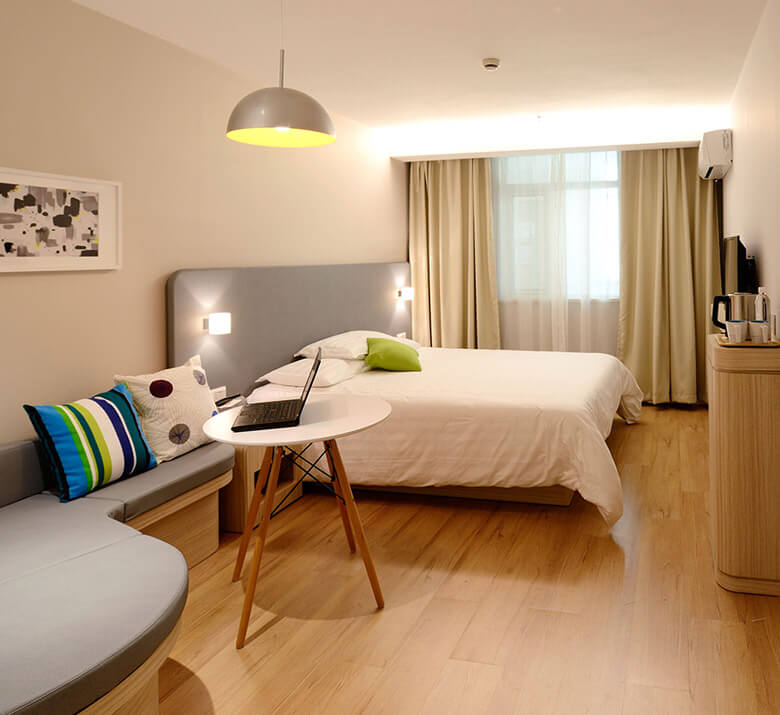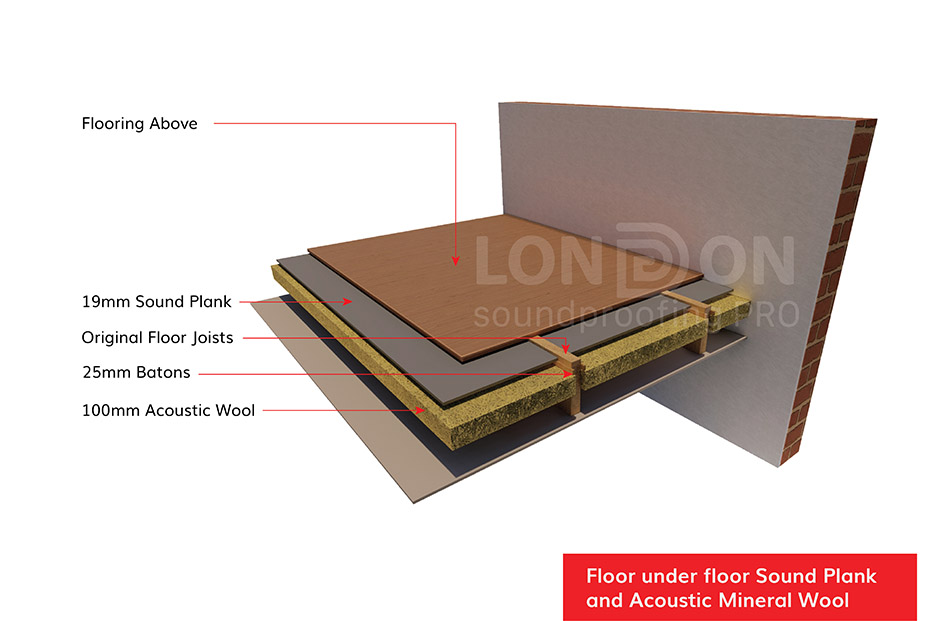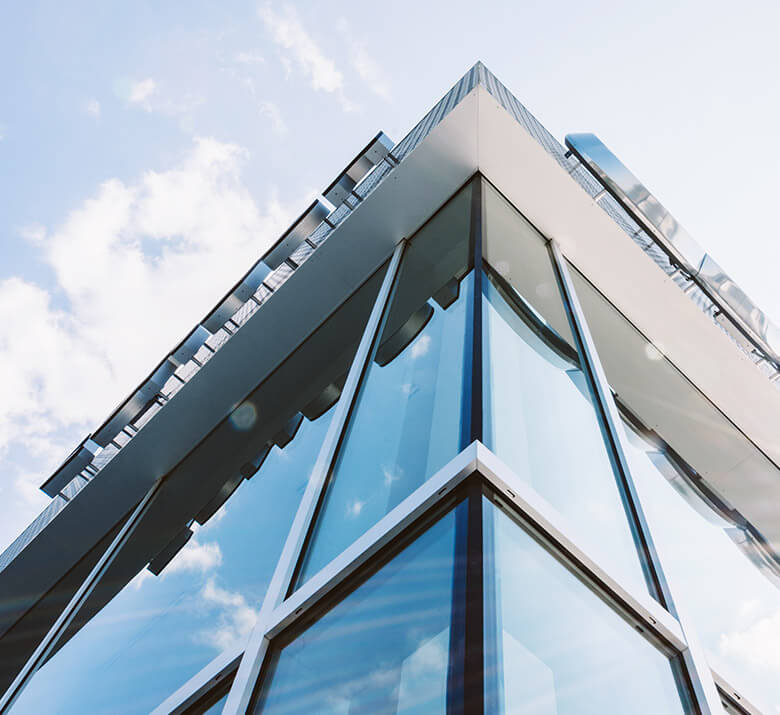Soundproofing a floor is an excellent way to reduce both impact and airborne noise, increasing the level of silence and tranquillity within a given space. Various floor soundproofing solutions can drastically enhance the acoustic performance of any floor type, whether they are wooden floors or concrete floors. Undeniably, the best soundproofing products are meticulously designed to meet part e building regulations standards, meaning they offer premium sound insulation and are optimal for various industries.
An efficient floor soundproofing system generally includes the use of an underlay paired with acoustic floor insulation. This combination works to absorb sound, providing a remarkable sound reduction outcome. The underlay is normally placed underneath a floating floor to stop vibrations from travelling through. Soundproof floor insulation, on the other hand, is used to interrupt the path that sound waves follow, minimizing noise transfer.
Floors
Acoustic Mineral Wool and Membrane
This installation is usually made when old floor planks are replaced with chipboards, mineral wool is then installed in between the joists then a structured deck is installed over the entire floor. The floor is not adjusted to anything due to the floating style that it follows.

Floors
Over Floor Soundplanc and Acoustic Mineral Wool
This installation process includes adjusting the mineral wool in between the joists and floorboards then the original floorboards are put back on and then sealed with an acoustic sealant. A thick plasterboard layer is mounted on the surface and coated with an acoustic silicone.

Floors
Under Floor Soundplanc and Acoustic Mineral Wool
This installation may not be as effective as the over-floor system; however, this system is used where there is no ability to increase the height of the flooring or if the client would like the original flooring to be exposed.

Floors
Under Floor Hanger System
This installation process is chosen when the client wants the original floorboards as the finishing layer. The original floorboards are removed, and the joists are fitted with mineral wool. The floorboards are then refitted to the flanges of a suspension hanger that is mounted on the joists..

Flooring
Acoustic Mineral Wool and Triple Barrier Matt
This system involved removing the original floor panels, adding mineral wool and then refitting the original panels back and sealing with acoustic silicone for extra absorption.

Floors
Acoustic Mineral Wool and Defender35
This installation process includes removing and replacing the old floor panels with new particle board. Mineral wool is filled in between the joists under the new panels.

Floor soundproofing solutions
Floor type plays a significant role in determining the kind of floor soundproofing products best suited for each project. For example, wooden floors require different soundproofing products from concrete floors, which may be harder to soundproof due to their solid, dense nature. Notably, it is crucial to consider the floor height whenever one wants to soundproof a floor - the higher the floor, the more soundproofing layers required. Moreover, the final floor finish should align with the overall soundproofing options chosen. This ensures that the floor does not only soundproof but also matches the aesthetic value of the room.
Acoustic floor solutions come in plenty - the best among them depends on the level of insulation you want to achieve and the type of sound you're looking to reduce. From a bottom-line perspective, the selection process for acoustic floor solutions should be influenced by the level of soundproofing desired, the budget at hand and compatibility with the soundproofing works currently installed. In the end, remember that the best acoustic solutions are those that absorb impact sound in the best possible way and also enhance living comfort.
Using insulation materials
Insulation materials play a critical role in soundproofing a space, notably by reducing the levels of impact noise and airborne noise. This involves the use of various materials such as acoustic underlay and acoustic mineral wool, which are designed to absorb sound and prevent its transmission. For instance, for a timber floor system, fitting an acoustic underlay between the joists can significantly cut down on the passage of sound. In terms of the type of floor, both timber and concrete floors can benefit from soundproofing. Existing floor panels can be reinforced with a layer of acoustic matting, and this solution is particularly effective for airborne and impact noise.
A more extensive overhaul could involve the use of high-performance acoustic materials to soundproof your floor. For this, once the floor is up, you could install soundproofing material in the cavities between the floor joists, with an additional layer of acoustic mineral wool for optimal sound absorption. Then, on top of the existing floor, a layer of acoustic mat would act as an underlay, further enhancing the soundproofing. Regardless of the type of soundproofing used, the level of noise reduction desired will determine the range of acoustic materials needed. For instance, a solution to airborne noise may require a different set-up from one addressing impact noise. Often, carpet underlay is an easy way to soundproof by minimising sound transmission while adding thermal barrier to the floor system. Some types of acoustic underlays are especially designed for hard floor finishes, providing an effective floor soundproofing solution that is not only cost effective but also easy to install.
It's worth noting that the type of noise - be it from airborne sound or the impact of footsteps - will greatly influence the soundproofing material used, the way it is installed, and where it is applied on the range of floor types, from timber to concrete. Added benefits include thermal insulation and enhanced comfort, making the proper use of this materials an integral component to any construction or renovation project.

